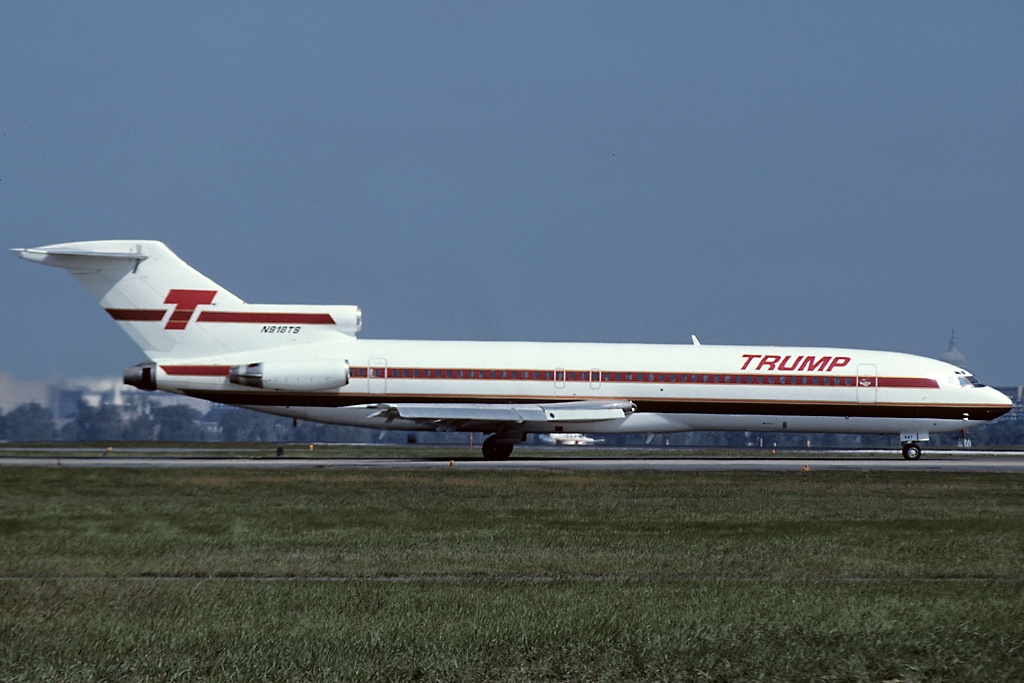Donald Trump is a name that conjures up images of real estate, reality TV, and, of course, politics. However, fewer may remember Trump’s foray into the airline industry with the Trump Shuttle. This venture was as bold and brash as Trump himself, featuring luxury amenities that were unprecedented for short commuter flights. The Trump Shuttle promised to revolutionize air travel on the East Coast, but instead, it serves as a cautionary tale of ambition clashing with the realities of the airline business.
In the late 1980s, Trump made a significant gamble by purchasing the East Coast shuttle operation from the struggling Eastern Air Lines. The deal was finalized in 1988 at the Trump Plaza Hotel, where Trump and Eastern Air Lines President Frank Lorenzo reached an agreement. Trump acquired the shuttle for $365 million, a steep price at the time, which included 17 aging Boeing 727s, landing rights, and access to essential airport infrastructure in Boston, New York, and Washington D.C.
Join us on TELEGRAM for the Latest Aviation Updates fresh to your phone.

Photo by Barry Thumma | Associated Press
Luxurious Beginnings and Operational Challenges
The first Trump Shuttle flight took off on June 8, 1989, aiming to provide a level of service akin to what one might expect in a luxury hotel or casino. Trump, who had built a name for himself in the casino business, wanted the airline to reflect the glamour and glitz of his other ventures. The planes were outfitted with leather seats, maple wood veneer, chrome buckles, and even full-length mirrors. Lavatories were equipped with fake marble basins, and the airline offered hot meals and free drinks—unheard of luxuries for such short trips.
However, the reality of running an airline soon hit. The Trump Shuttle began operation amidst high expectations for punctuality and service. Yet, the very first flight was delayed by 45 minutes, a hiccup that was especially embarrassing given Trump’s public emphasis on reliability. This incident foreshadowed the operational challenges to come.
Competitive Pressures and Financial Struggles

Despite the luxurious appointments and aggressive marketing, the Trump Shuttle struggled to capture market share from its main competitor, Pan Am, which held a dominant position in the East Coast corridor. Trump had publicly expressed his delight in competing against Pan Am, disparaging their safety and maintenance record. This rivalry, however, backfired in August 1989 when a Trump Shuttle plane experienced a landing gear failure attributed to maintenance shortcomings—a blow to the airline’s reputation and Trump’s criticisms of Pan Am.

Financially, the Trump Shuttle was bleeding money. By the end of 1990, the airline had reported losses of $128 million, and the luxurious touches that set the airline apart were proving to be financially unsustainable. The airline industry insider perspectives were critical of Trump’s approach; they believed he missed the essential nature of commuter flights where convenience trumped luxury.
The End of Trump Shuttle
The economic pressures and operational challenges culminated in a significant restructuring. In late 1991, Trump ceded control of the Trump Shuttle to creditors, and US Airways took over the operation. The deal relieved Trump of a $245 million debt burden, reducing his personal liability significantly. US Airways eventually phased out the Trump branding and integrated the shuttle into its broader operations, stripping away the lavish elements Trump had introduced.

In 1997, US Airways completed the acquisition of the shuttle service, marking the definitive end of the Trump Shuttle as a distinct entity. The rebranding under US Airways signaled a return to more traditional, utilitarian service on the East Coast routes, a stark contrast to the opulence Trump had envisioned.
Trump’s vision of bringing luxury casino-style service to air travel was innovative but ultimately misaligned with the market dynamics of commuter flights. The failure of the Trump Shuttle also highlights the importance of industry expertise and the risks of over-leveraging in business ventures. Despite the initial fanfare and investment, the airline could not sustain its business model, which prioritized style over substance.
Featured image by Felix Goetting
Youssef Yahya is the CEO and Founder of Aviation for Aviators. He also serves as the Chief-in-Editor of the platform’s website, where he shares his passion for aviation and provides valuable resources for aviation enthusiasts and professionals alike. His love for aviation and entrepreneurial spirit drive him to create innovative solutions, making Aviation for Aviators a unique resource in the aviation sector.
You might also like:
- KUWAIT AIRWAYS’ DOUBLE DELIVERY
- How to Recognize the Type of Commercial Airplanes – PART#3
- Paris Air Show Returns with Renewed Focus on Defense Aircraft and Drones
- All Luxuries of Air Travel in One Airport (HIA)
- The Extraordinary Story of British Airways Flight 9
Discover more from Aviation for Aviators
Subscribe to get the latest posts sent to your email.

